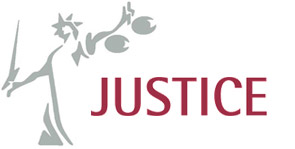In 2015, against the backdrop of austerity and the commencement of HMCTS’s Reform Programme, JUSTICE convened a Working Party which set out to assess the court and tribunal estate. Its aim was to make recommendations to reimagine how the estate could guarantee access to justice for all. In its 2016 report What is a Court?, the Working Party recommended that HMCTS’s Court Standards and Design Guide (2010) should be revisited in light of the fundamental changes to the justice system occurring as part of the Reform Programme.
In May, HMCTS published its new Courts and tribunals design guide (“New Guide”). In response, JUSTICE has produced an update on What is a Court?
Overall, the New Guide is encouraging. It is principle- and performance-, rather than technically led, and features many elements needed for a responsive and flexible court estate. It captures a broader array of users than practitioners and judges, features specific accommodation for vulnerable participants in the court process and has shifted the design away from a strict delineation of buildings and courtrooms on the basis of jurisdiction. Instead, the New Guide provides for greater flexibility within the court estate, through distinct “formal” and “standard” justice spaces, with the latter offering different sizes and formality (for instance, the option of a raised judicial bench), depending on the needs of the particular hearing. As recommended by the JUSTICE Working Party, the New Guide also provides for communal work spaces for judges, a recommendation aimed at promoting collegiality on the bench.
There is room for improvement in the New Guide. The Working Party had recommended the use of “Simple Justice Spaces”, which would contain a low degree of formality for hearings such as those in the First-tier Tribunal Property and Social Entitlement chambers, and this type of space is absent in the New Guide. The report had identified the negative impact on access to justice caused by court closures, and recommended that HMCTS develop courts that could service communities affected by court closures. This could either be on a “peripatetic” basis, where judges travel throughout the country for hearings, servicing areas that do not have a ‘traditional’ judicial presence, or through courts and tribunals holding hearings on a “pop-up” basis in towns on a rotational basis dictated by demand. Spaces such as local council offices, libraries, community centres and schools would be suitable for “pop-up” court hearings for those matters needing little recourse to formal security arrangements.
Currently, there is insufficient consideration in the “supplementary provision” section of the New Guide for these kinds of spaces. The recent Justice Committee report into the Reform Programme recommended that HMCTS adopt a clear strategy for establishing and using supplementary venues, including a default position that supplementary venues be established in every area where there has been a court closure in the past 10 years. Finally, our response flags the need for the court and tribunal estate to consider the need for “resource hubs”: designated spaces in the physical court estate with computers, telephone stations, leaflets and digital helpers, who could assist people complete court forms or processes, whether in hardcopy or through processes which have migrated online through the Reform Programme.
